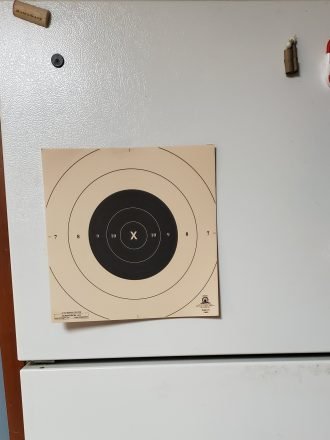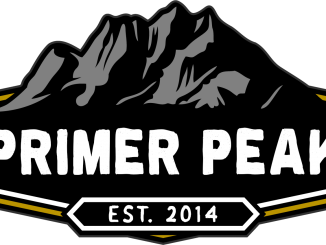
Many shooting ranges are being shut down as part of the effort to control the spread of Covid-19. While the retail side of things is largely staying open and is experiencing record sales, the shooting side has often had to be closed down. It can be hard to maintain the suggested 6 ft of separation on indoor ranges. Not to mention that many ranges have less than optimal HVAC systems. These closures make dry fire practice even more important than ever.
Why Dry Fire is Important
Experienced shooters may be left wondering how they’re going to maintain their hard-earned skills if their local range is closed. Add to that the large number of new gun owners who are not being afforded the chance to practice, and you have a whole lot of people untrained. This is where dry fire practice comes in.
With so many first-time gun owners flooding the market, these range closures are problematic. Individuals are making purchases with little to no tangible experience shooting a firearm. Then, because the range is closed, they take their new purchase home having never so much as put a single bullet in the magazine. This is a recipe for disaster.
Despite the closures, there is still a lot that you can do to get practice and experience. One of the best things you can do to improve your shooting is dry fire practice. It offers the opportunity to practice all of the important skills without the expense, noise, or recoil of live fire practice. But what exactly is dry fire practice?
What is Dry Fire Practice?
Dry firing is the act of firing your unloaded weapon in a safe manner for practice purposes. You can do it with an unloaded weapon or with dummy rounds. There are several advantages to dry fire practice. Done correctly, dry firing can help improve your skills as a shooter as well as prepare you for your first range trip if you are a new gun owner. You have the opportunity to practice important skills such as stance, grip, aiming, and trigger pull without the distraction of the bang and recoil of live fire. It’s also basically free unless you start getting into more serious shooting drills.
What Equipment Do You Need to Dry Fire?
Some shooters set up elaborate dry fire practice spaces, but the average shooter doesn’t need anything fancy. I recommend that you follow KISS – Keep It Simple Son (when it comes to gun safety stupid is a word we don’t use around here!). In order to do basic dry fire practice you need just a few things:
- Your firearm, including magazines
- Your holster if you carry your firearm
- A safe space to practice (more on this later)
- A target
- A notepad and writing utensil
- Your smartphone (optional but important)
Where Should I Do My Dry Fire Practice?
Picking the spot to do your dry fire practice is probably the hardest part. Even when dry firing you should adhere to the 4 rules of gun safety:
- Treat all guns as if they are always loaded.
- Never let the muzzle cover anything you are not willing to destroy.
- Keep you finger off the trigger until your sights are on the target and you are ready to shoot.
- Be sure of your target and what lies beyond.
That fourth one is the stickler when trying to select a place to do your dry fire practice. It is important that you find a location that doesn’t present a threat to others should you have a negligent discharge. Remember that bullets will easily travel through drywall, floorboards, or ceilings. If you have an underground basement that would be ideal as long as you’re firing in the direction of dirt or the concrete wall (not a walk out basement).
If you live in an apartment or a house without a basement you still have options. One of the best options is a bookshelf from the narrow side. Not the from where you put the books in. Often times bookcases are pushed up against a wall so they may not be convenient to use. While not ideal, a well-stocked refrigerator works well. Just be prepared to buy a new one if something unthinkable happens! Stone fireplaces air conditioner units are another option.
Wherever you decide to practice it is a good idea to make that your regular place. By always practicing in the same spot you help build a routine that can increase safety. Never keep live ammunition in or near your dry fire practice space. If you are practicing with your every day carry weapon reload it in another part of the house after stepping away from your practice session for several minutes. It is easy to put your gun away and think “oh just 5 more minutes” and then have a negligent discharge.

Won’t Dry Fire Tear Up My Gun?
Generally speaking dry fire is safe for all centerfire guns. You do have to be cautious when dry firing a rimfire pistol or some older guns. Dry firing a rimfire weapon can cause the firing pin to mushroom or put a dent in the chamber because of the way they are designed. In some older guns the firing pin may travel too far forward causing damage. To address this all you need to do is buy some Snap Caps. They are fairly inexpensive and easy to use. Snap Caps are simple dummy rounds that have a soft material in the primer pocket for the firing pin to strike. You can get them for any caliber, or even make them at home with the right equipment!
Other Options
If practicing without your actual gun is completely out of the question you can still get some good at home practice. Several options exist to choose from:
Laserlyte
Laserlyte offers a training pistol that projects a laser at your target. The training pistols offer a similar ergonomics when compared to a real gun. They are a great way to practice trigger control and can be used alone or with add on products that give more feedback. The Laserlyte pistol is also more affordable when compared to other training guns. While they may not be a 1:1 model of real firearms, Laserlyte is one of the most economical options.

SIRT
The SIRT (Shot Indicating Resetting Trigger) Pistol is a little pricey but can be a great training tool. Like the LaserLtye, this is a laser-based training gun weighted and balanced to feel like a real gun. Unlike the LaserLyte, the magazine on the SIRT is removable so you can practice reloads. You can also adjust the trigger to more closely resemble the trigger pull on your real weapon. It also has a usable accessory rail. One of the biggest benefits of the SIRT is it having replicas of Glock and M&P pistols, compatible with most holsters for those models.
Airsoft
Airsoft guns have become incredibly sophisticated over the last couple of years. You can find some that nearly exact replicas of actual guns and even realistically simulate recoil. Depending on the type you get, the cost of an airsoft gun is considerably less than other training guns as well. Several shooters have proven that proficiency with airsoft gun can lead to great skill with an actual gun.
How to Practice Dry Fire
The act of dry firing itself is pretty easy once you have everything in place. You will want to schedule a time do your dry fire practice. Ideally you want to practice several times a week. It is an easy thing to push off (just like working out), so by adding it to your schedule you make it a priority. When you’re ready to start just hang up your target on the pre-selected backdrop. You also want to have a training plan in advance. Knowing what you want to practice on any given day saves time and makes your training more productive.
So what do you practice? In reality you can practice anything and everything that you do at the range. A good progression is to start out practicing getting a good grip on your firearm while in the holster. Then move on to gripping the gun and beginning to draw it from the holster. After you are comfortable with that, practice drawing the gun and moving into a low ready position. Continue to progress at each step until you are drawing from the holster and getting sights on the target. Eventually you can even add in reloading, movement, unusual angle shooting, and more. Start out slow and focus on form, not speed. Speed comes naturally once you have the form down.
Pretty much any drill you practice in live fire can be practiced in dry fire as well. YouTube can be a great resource for firearms education and drill ideas, as long as you get on the right sites. Some of our favorites are:
Extra Stuff
There are a lot of things you can use to enhance your dry fire training. By using a shot timer during drill practices you monitor improvements to your speed. The timer can also add a sense of urgency and pressure that will help you perform better should you ever need to defensively use your firearm.
Using your cell phone to record video of your training can also be a huge help. Whether you share the video with your firearms instructor or just review it yourself, it will give you the opportunity to see things you may not notice from behind your gun. Video lets you check in on things like stance, grip, and sight alignment that can be overlooked when firing.
If you are looking to up your shooting game consider investing in a MantisX. The MantisX is a device that attaches to your firearm and provides feedback to a smartphone application via Bluetooth. It offers data on how you are shooting and tracks improvement over time. Depending on the version you purchase it can be used for dry or live fire training. It is a significant investment but definitely worth it if you want to move to the next level.
For more information on how to intelligently improve your dry fire, check out The Dry Fire Primer by Annette Evans. This book has been a great resource to help shape how I conduct my practice at home and abroad. It’s a quick read, and definitely worth the cost of entry.
Conclusion
It doesn’t matter if you are a new shooter or have years of experience, everyone can benefit from dry fire practice. You can make it as simple or as complicated as you want just as long as you make a regular part of your training regimen. Dry fire practice will help you improve in all areas of shooting and the results will be obvious next time you go to the range.





Be the first to comment